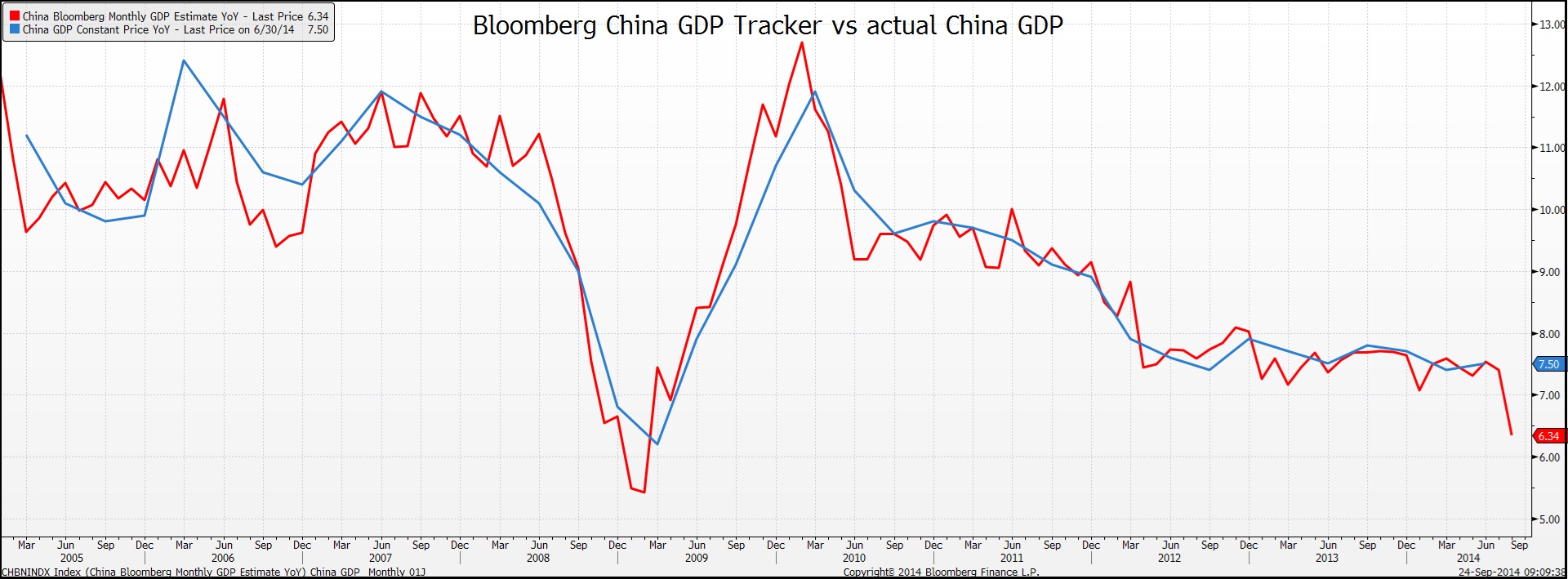The Three Bears discuss monetary policy US yields and interest rate expectations eased back yesterday and the dollar was mixed in generally trendless trading.
The market got no direction from three Fed speakers, who reminded me of the Three Bears of Goldilocks fame. Kansas City President George, a non-voting member of the FOMC, said now is the time to start normalizing rates and that they “should have been off zero by this point,” while Minneapolis President Kocherlakota said he’s more worried that the Fed will raise rates too quickly than too slowly. Meanwhile, St. Louis Fed President Bullard said he expected “something in the first half of next year.”
The only noticeable trend was that the dollar was higher against the three commodity currencies. Part of that may be concern about Chinese growth as analysts looked at the details of yesterday’s manufacturing PMI. There were also individual stories for the currencies. After CAD dropped sharply on Friday, I had expected it to rebound somewhat on Monday. But Canadian retail sales unexpectedly dropped in July for the first time in seven months. The impact of this disappointing figure was compounded by statements from Bank of Canada senior Deputy Governor Wilkins that the country’s economy still needs a boost of monetary stimulus to help keep the recovery on track. It could take longer than I expected for CAD to regain its footing.
NZD fell after Fonterra cut its forecast for its milk payout to farmers. The currency got only a small boost when the trade balance for August came out at a deficit of only NZD 472mn, less than half the forecast deficit of NZD 1.125bn. Within the data, exports to China fell to a 12-month low, demonstrating in another way how New Zealand’s agricultural exports are not exempt from the slowdown in China. Bloomberg has created an index that tracks China’s GDP to help forecast the official figure. The index suggests growth has fallen to around 6.3% yoy, far below 7.4% in Q2. This would probably hit AUD and NZD further if it turns out to be anywhere near accurate. 3Q GDP figures will be released on Oct. 21st.

A NATO spokesman said that there has been a “significant pullback” of troops from Ukraine. Local media has reportedly suggested that if the situation continues to improve, it’s possible that some sanctions on Russia could be lifted, perhaps as early as the end of the month. Investors should monitor the situation carefully as any lifting of the sanctions could have a major impact on the ruble, which in any event is the highest-yielding of the major EM currencies. Some easing of the sanctions might also help EUR, because it would mean more trade for European businesses and potentially less downward pressure on European food prices. A reduction in tensions could also hit gold, although gold did not get much of a boost from the tensions to begin with.
S & P had some worrisome words for Europe. The rating agency argued that the increasing popularity of Germany’s anti-euro party, the Alternative for Germany (AfD), will make it politically difficult for Germany to participate in any pan-European financing. In effect, this calls into question the euro bail-out mechanism and will make it harder for the ECB to institute any form of quantitative easing. With the AfD gathering support on the right of Chancellor Merkle, the kind of last-minute compromise that she agreed to each time the Eurozone hit a crisis in the last few years may not be possible in the future. While this report is not likely to move the market today or tomorrow, the increasing popularity of a serious and respectable anti-euro party in the country most responsible for maintaining the currency’s viability is a potential negative for the currency.
Today’s indicators: During the European day, the main event will be the German Ifo survey for September. All three indices are expected to have declined, something that could add further pressure on the common currency and give investors a reason to push EUR/USD down.
From Sweden, we get the economic tendency survey for September and the overall business and consumer sentiment is expected to decline. This would add to the growing body of evidence that Sweden’s economy is deteriorating and could weaken the Swedish krona.
In Norway, the AKU unemployment rate for July is anticipated to have remained unchanged, in contrast with the increase in July’s official unemployment rate released in August.
In the US, new home sales for August are coming out and the consensus is for the figure to increase. However, the recent weak housing data increase the possibility for a softer reading.
Cleveland Fed President Loretta Mester and Chicago Fed President Charles Evans speak this evening.
